Home » Creating Sensory Bins
Posted by:
Categories
Date
Our sensory bins have always been a difficult planning piece for us. At the end of a week, we would often sit and reflect on ways that we could change or add to our bins. We would find ourselves unsure of what new materials to provide.
Sometimes our provocations ended up being closed in terms of what children could do with them due to “overthinking” (e.g., fishing for letters – not a real, genuine experience).
Over the years, we noticed that our children were most drawn to different types of containers that allowed for them to pour, measure, transport, and carry. We know that many of our children are drawn to sensory explorations and seek it out as a place to play. We wonder how much it supports self regulation and notice that many children change their state when engaged in sensory play. Although, we worked to responsively plan provocations based on what we were seeing and hearing, we often felt stuck.
In the fall we attended a workshop hosted by our school board that featured Tom Bedard (http://tomsensori.blogspot.ca/) and we have totally rethought how we support and engage with sensory plan in our classroom. He reminded us at the beginning of the workshop that “play is a disposition, not an activity” which grounds us in understanding that it is less about what we want the children to do and more about the interesting materials we provide and watching how our students interact with them.
Tom Bedard shared that the overarching process in sensory play is often “transporting”. After he shared this simple thought with us we began to recognize that we were in fact seeing this all over our classroom. Our children will often empty baskets to carry other materials around the room. How often do we view that child as a “dumper” of materials…what if instead we recognized them as “transporters”. It truly changes your state of mind when observing in the classroom, we began to see transportation everywhere.
Tom Bedard shared his journey in creating incredible apparatuses for the children in his programs. He reflected on all of his observations to improve his creations and support other educators in understanding the construction process. We created our first apparatus at the workshop and before school. Of course, constructing with students is an option as well!
Tom shared that he has been creating different apparatuses for children to explore with sensory play for years. Through his presentation he shared some strategies and information to reflect on when trying to create something for your own students:
Children need to transport what is in the table:
When creating an apparatus, think about ways that you can incorporate transportation. When building this one we connected both of our sensory bins together and provided a variety of buckets, containers, and scoops to support students in transporting the materials.
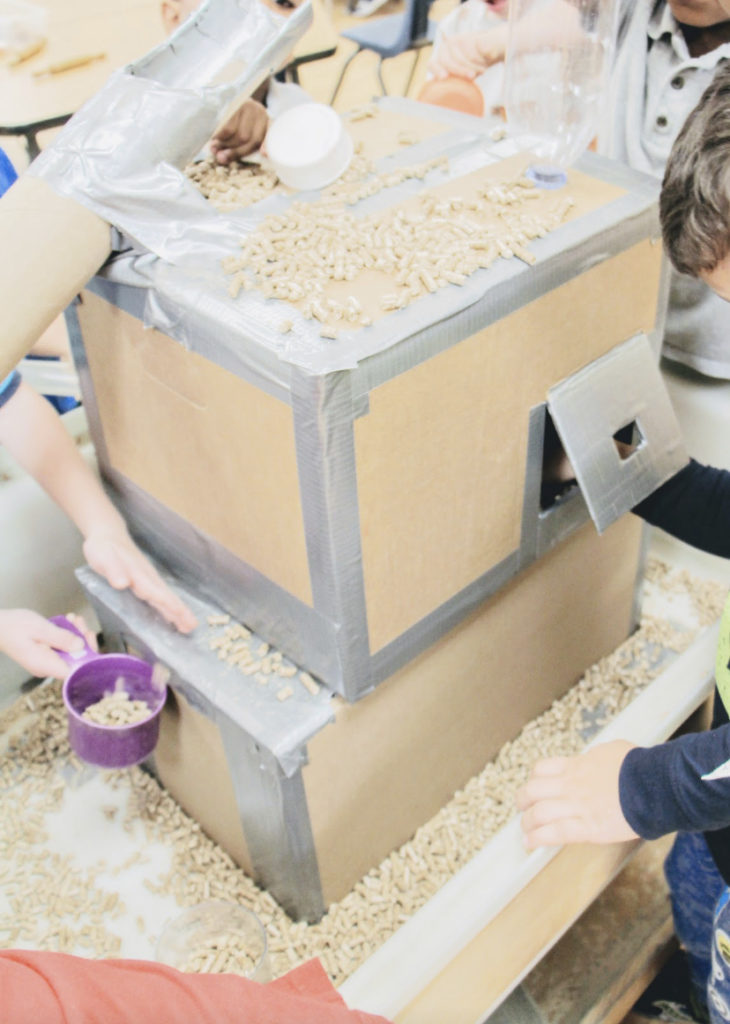
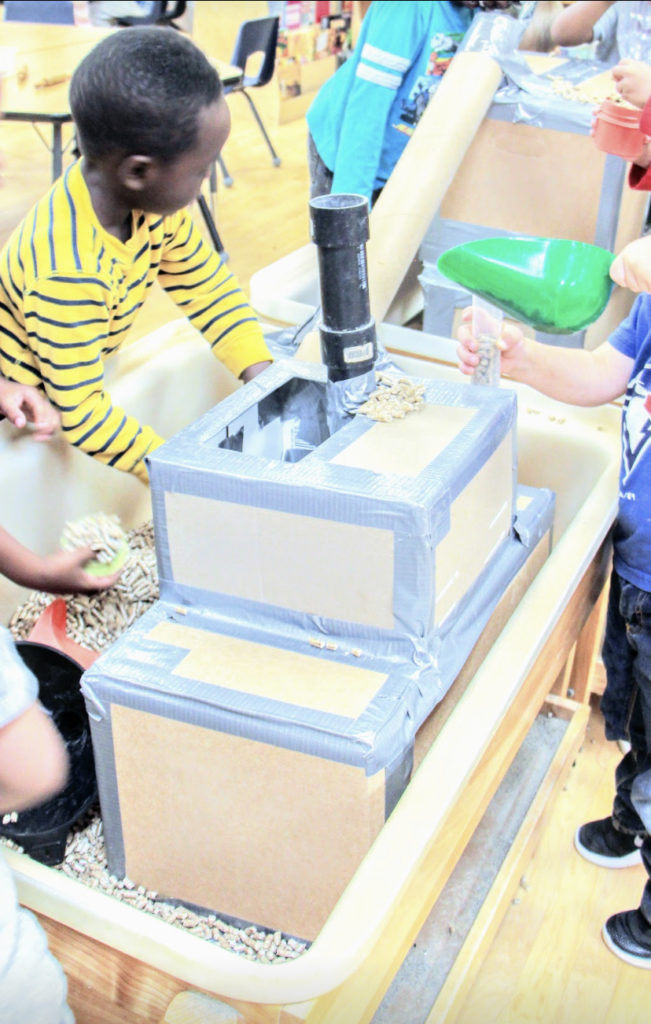
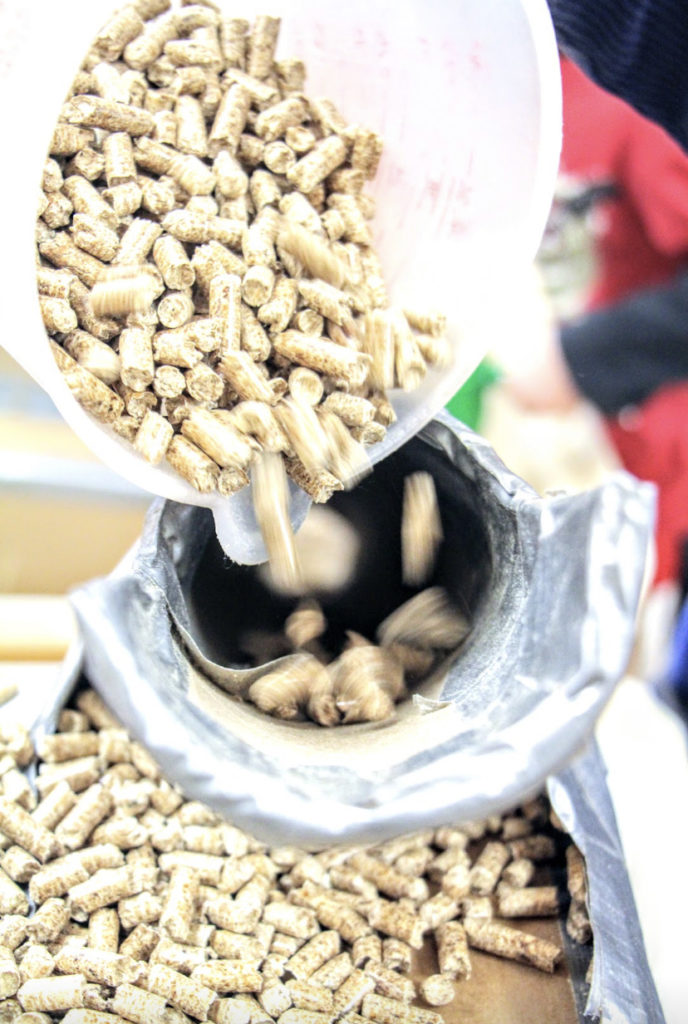
Children will find all of the levels of physical play:
We talked about incorporating different levels into our apparatuses. We cut holes in the cardboard boxes on the sides and in the middle to allow for materials to travel through the levels in different ways.
Levels also support us in teaching vocabulary through our free flow conversations. We have the opportunity to build in spatial language – over, under, through, down while playing alongside.
Holes in apparatuses often attract children’s attention as well. They will put things in and take things out, Tom explained that holes can “give the apparatus life” by making it turn into a machine or providing opportunities for dramatic play.
Providing stools in the sensory bin area supported our students in reaching the different levels of the apparatus safely!
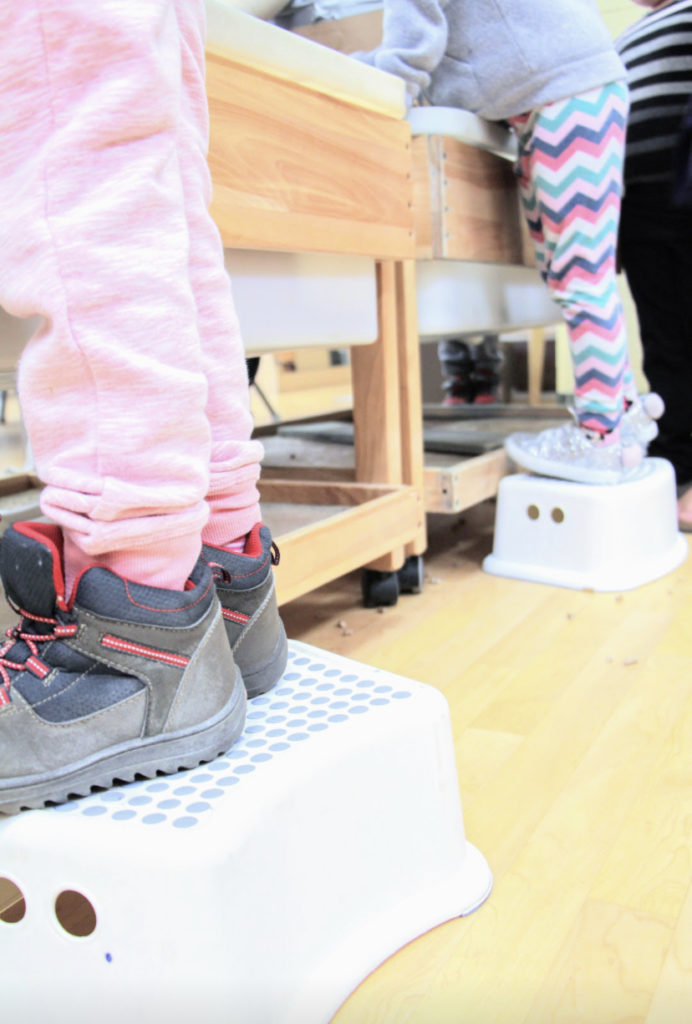
Children are naturally drawn to pouring, rolling, and sliding materials down ramps, chutes, and tubes:
Creating different types of inclines in an apparatus will appeal to children’s interest in ramps and movement of materials. There are many ways that you can do this – using tubes, trays, pipes, or tubing.
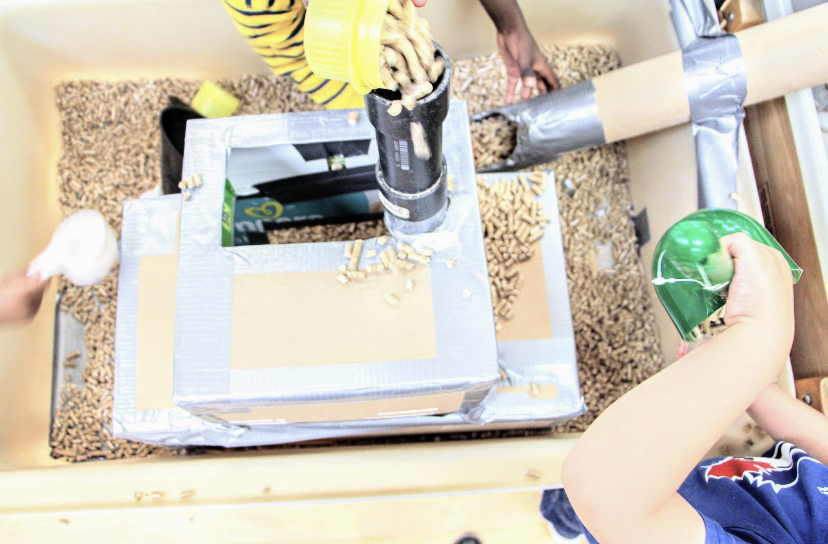
What types of materials can you use in a sensory bin, besides sand?
Wood Pellets (can be found at hardware stores, made for wood stoves), Jurassic sand, White Sand, Moon Sand, Feed Corn, mud.
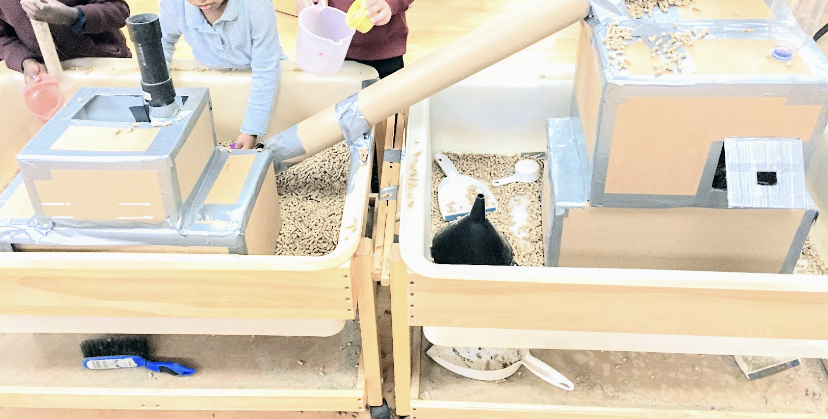
Location is important!
Sensory bins could be placed on the floor to allow for better reach with students. Some educators shorten the legs on their sensory bins to allow for better access too. Alternatively, we added stools so that our children were able to reach the different levels of our creation.
Our sensory play definitely gets messy! It is also important to think about location of your sensory bin, when possible. If it is in a space that has a natural “corner” it will support the containment of the “mess” a bit better! Some educators will lay down mats to catch some of the materials or water too.
Building Independence:
To support our students in building independence and taking ownership, we also added small sweepers underneath our sensory tables. We talked about sweeping after playing to ensure that we have enough materials to continue to play or if you accidentally spill how sweeping it up will help keep everyone safe.

How many is too many…or is there too many?
Often times we quickly add limits to areas of the classroom as educators. We want to teach children to understand limits themselves and to negotiate the space and materials that they use with their peers independently. When we first set up this apparatus for our students, there was a lot of excitement and interest.
We found that this area provided a genuine opportunity for negotiation and problem solving skills. We noticed a few things:
We have been exploring and using this sensory bin for over a month and are starting to notice that it may be time to change our medium and apparatus. We have documented a variety of learning experiences from dramatic play, to scientific experiments, to measurement, and language development.
For continued inspiration, please be sure to take time looking over Tom Bedard’s blog. He has been creating simple, yet incredible structures for his students for years. Don’t overthink it, try something new!
Sign up for our mailing list if you would like to stay connected, learn about new ideas that can be implemented in your classroom, get access to exclusive material and offers.
We respect your privacy.
Copyright 2019 – PCE Connecting Learners. | Designed & Developed by BrandCo House.
